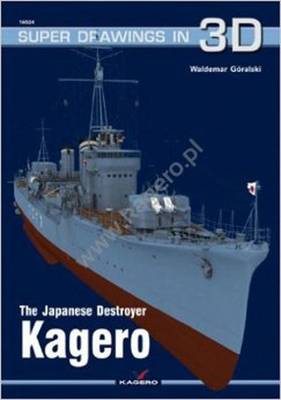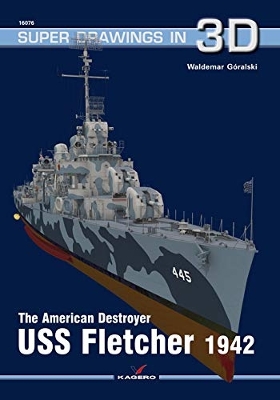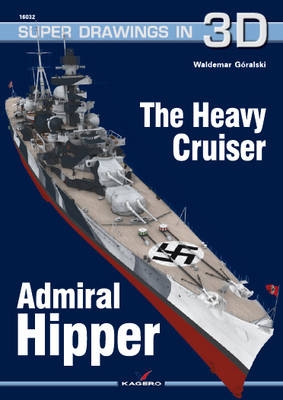Super Drawings in 3D
4 total works
The Japanese destroyers truly made their mark during the war in the Pacific. Fast, heavily armed and manned by well-trained crews, they took part in some of the most memorable surface and air-sea battles of the Pacific War, but also in hundreds of lesser known actions. Those workhorses of the Imperial Navy were employed in a wide variety of roles – from direct action against enemy fleet to escort duties and even pure transport tasks. Commander Hara Tameichi rightly observes that it was the destroyers that bore the brunt of the fighting at sea, and very few among them were as good as the Kagero class warships.
When, in the early 1930s, the Americans began modernizing their navy, they considered the replacement of old destroyers from the Great War as one of the most urgent tasks. However, the new projects, disappointed and dissatisfied the sailors. Some of these vessels were heavily overloaded (e.g. Sims class and early Benson ships), as a result some of the weaponry had to be removed. By proceeding with the design of subsequent series of destroyers, efforts were made to respect the Treaty restrictions (London, 1936). The originally formulated requirements envisaged a destroyer with a displacement of 1,600 tons and armament consisting of not less than 4.5-inch (127 mm) guns and 10 x 533mm torpedo tubes and a speed of 36 knots. There were six variants of vessels slightly different from earlier Benson and Sims classes. It soon became apparent that additional requirements could not be met within the limits of this displacement. This mainly concerned making space for a 28-mm quadruple automatic cannon and more powerful ASuW weapons.
On 18 June 1935 a bilateral agreement between Great Britain and Germany, which set German naval strength at a ratio of 1/3 of the size of the Royal Navy was signed. Hence the Germans were allowed to maintain the fleet of the tonnage of 421,000 tons.
It enabled the construction of 5 warships, 2 -3 aircraft carriers, 5 heavy cruisers, 5 light cruisers and 28 destroyers. Soon after the agreement had been signed the construction of two battleships and two so-called“Washigton” heavy cruisers, provisionally named “G” and “H”. The cruiser “H”, later named Admiral Hipper was built in Blohm&Voss shipyard in Hamburg. The ship was laid down on 6 July 1935 and launched on 6 February 1937. On 29 April the ensign was raised.
This addition to the Super Drawings in 3D series provides intricate, full colour drawings of this impressive ship, meaning it is the perfect addition to any collection and a useful tool for all those who are keen to learn more about the ship.
It enabled the construction of 5 warships, 2 -3 aircraft carriers, 5 heavy cruisers, 5 light cruisers and 28 destroyers. Soon after the agreement had been signed the construction of two battleships and two so-called“Washigton” heavy cruisers, provisionally named “G” and “H”. The cruiser “H”, later named Admiral Hipper was built in Blohm&Voss shipyard in Hamburg. The ship was laid down on 6 July 1935 and launched on 6 February 1937. On 29 April the ensign was raised.
This addition to the Super Drawings in 3D series provides intricate, full colour drawings of this impressive ship, meaning it is the perfect addition to any collection and a useful tool for all those who are keen to learn more about the ship.



